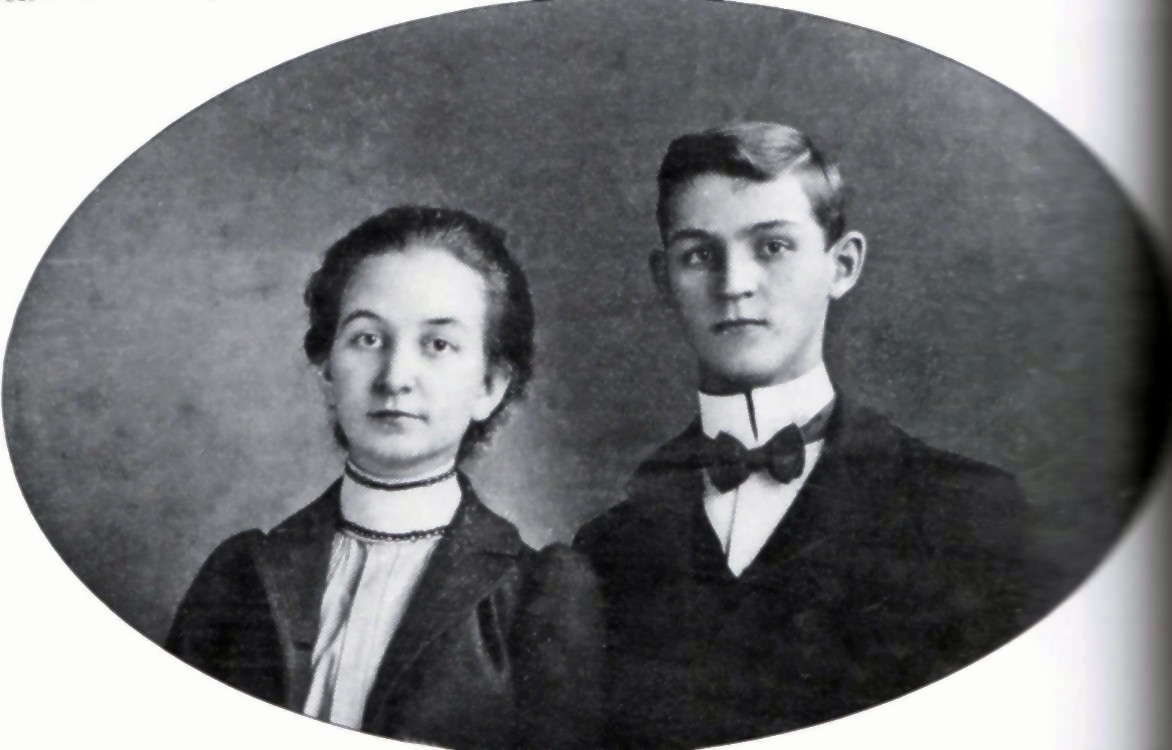“Necessity is the mother of invention” is an often-used trite expression. However, the irony for Jesse Mack Benson (1881-1958), lies in the fact that he invented a swing stage scaffold in the early 1930s following the death of a friend who fell 14 stories to his death when an unsafe scaffolding system failed.
Mr. Benson’s father came to the states around 1871 from Sweden. Young Jesse attended only two years of grade school and then at the age of 8, he began work at the Concord Creamery. After his father died, he worked at his father’s blacksmith shop in Concord.
Additional work experience in Kansas and Tampa, Florida, with iron works companies, and then in Missouri working on construction of tunnels for the Missouri Pacific Railroad yielded the on-the-job training that surely paved the way for his many patents in later years.
Jesse married his first wife, Lillie Ann Hayes, in 1900 when he was only 19 and he and his family moved back to the Concord area around 1920s. Given his intelligence and skills from previous employment, Jesse built the first bus for Fox Motor Lines. It is interesting to note that he had to remove the glass from the windows because people were afraid to ride in the bus.
By the early 1930s, Mr. Benson opened Benson Winch Company in the basement of his home on Westland Drive. The work soon spilled out onto his front yard, where he built a small concrete block building to continue work on his inventions.
It is also important to mention that Mr. Benson designed and oversaw the scaffolding for building of the San Jacinto monument in Houston, Texas, from 1936-39. The monument, built to honor those who fought for Texas’ independence, is 15 feet taller than the Washington Monument. Despite the size and danger of building the project, not a single life was lost during its construction.
The little Benson Winch Company from Concord grew substantially with the World War II effort, turning out hundreds of thousands of dollars of winches for the government. His inventions included a deep well pump, 5- and 10-ton hoisting winches and other hosting systems. He built and shipped hundreds of scaffolding and hoisting machines, Liberty ship anchor chains and numerous other military items.
WWII contracts called for the building of hundreds of barrage balloon hoists which enabled the government to salvage the balloons. Benson winches were used by the Navy for various jobs, including lowering and raising the anchors on many vessels and his work continued for the military during the Korean War effort in the early 1950s.
Shortly after the War in 1946, Miss Lillie Ann passed away and Jesse Mack married for a second time to Anna Belle Dailey in 1948.
Those who knew Jesse Mack said that he was well liked and was always willing to help the local farmers to repair their mechanical problems. He was instrumental in teaching the World War II National Defense Classes that were held at Farragut High School and he also taught the classes from his shop. These defense classes were designed to train the young men to be more valuable to the government when joining the war effort.
The amazing accomplishments of Jesse Mack Benson could serve to inspire today’s youth. He was a “natural-born, self-educated, engineer with only two years of formal education.” He and his wife Lillie Ann were also the progenitors of six children who have carried his legacy well into today. Chances are if you know a Benson from the Concord Farragut community, they are in his lineage.
Sources: Jesse M. Benson Biography courtesy of Jayne Ellis Sharpe and “Concord Plant Manufactures Safe Winches for Uncle Sam,” Newspapers.com, The Knoxville News-Sentinel, 02 April 1944.
Mona Isbell Smith is a retired computer systems analyst who enjoys freelancing.

Benson Winch Company (Photo courtesy of Farragut Museum)

